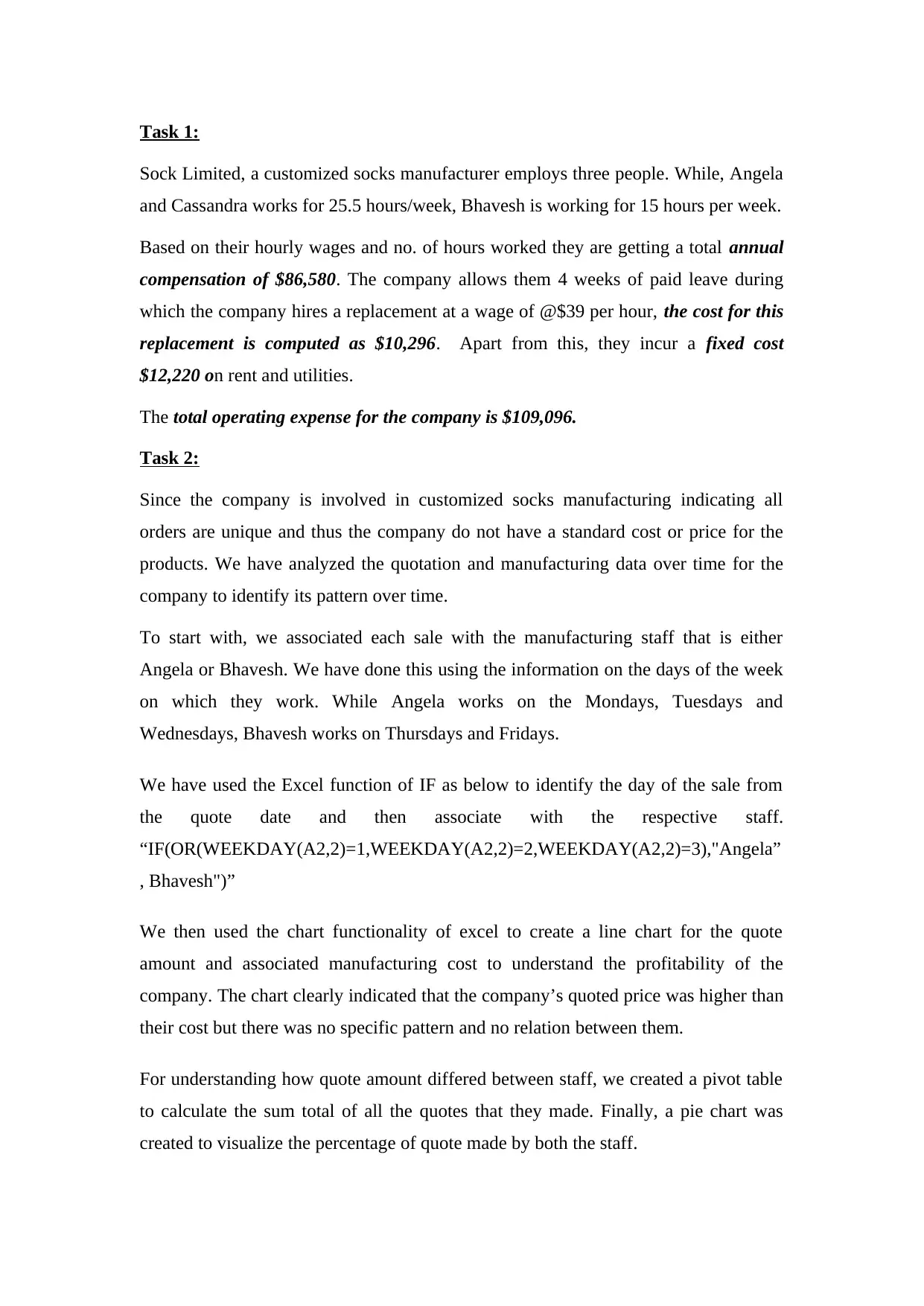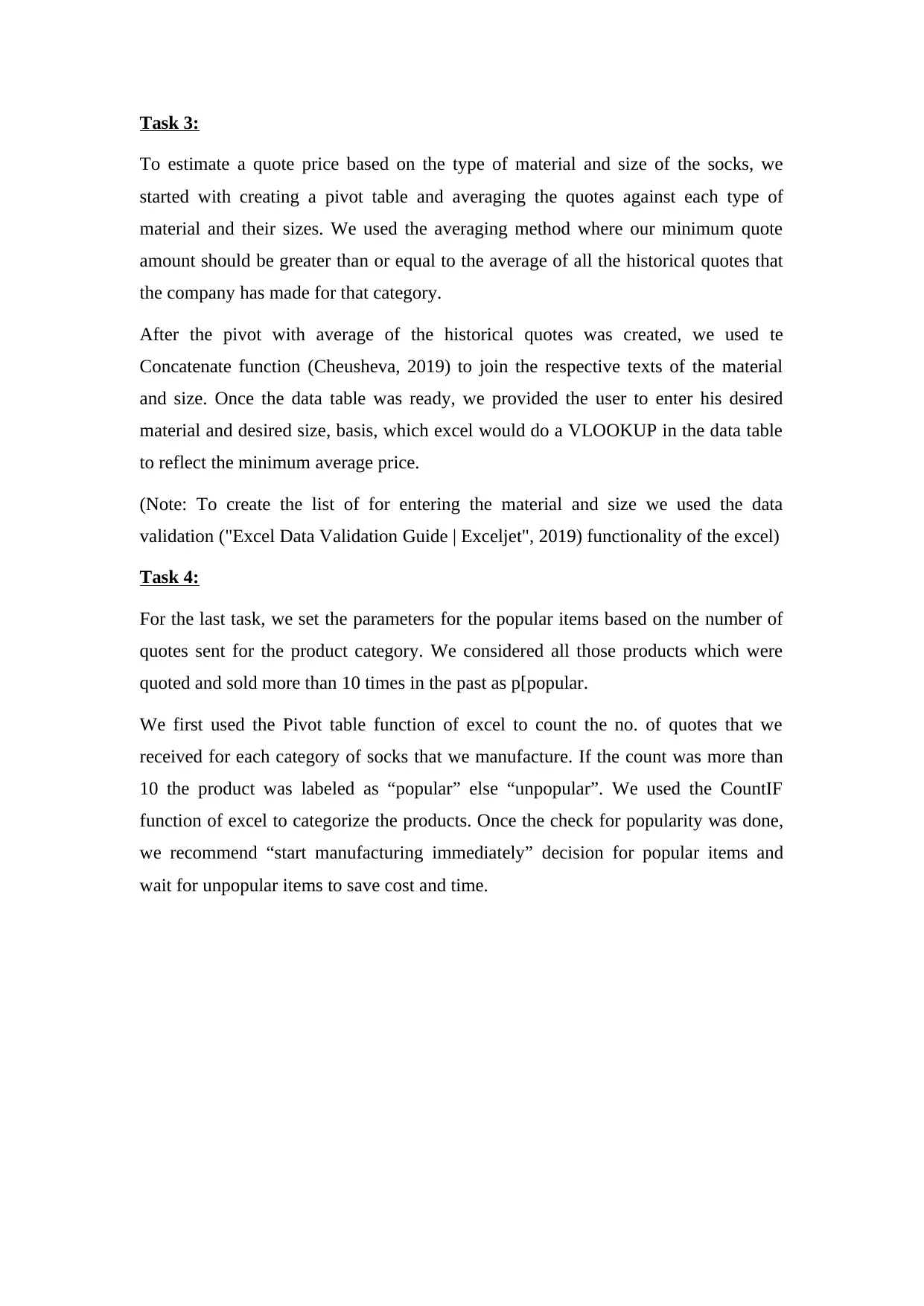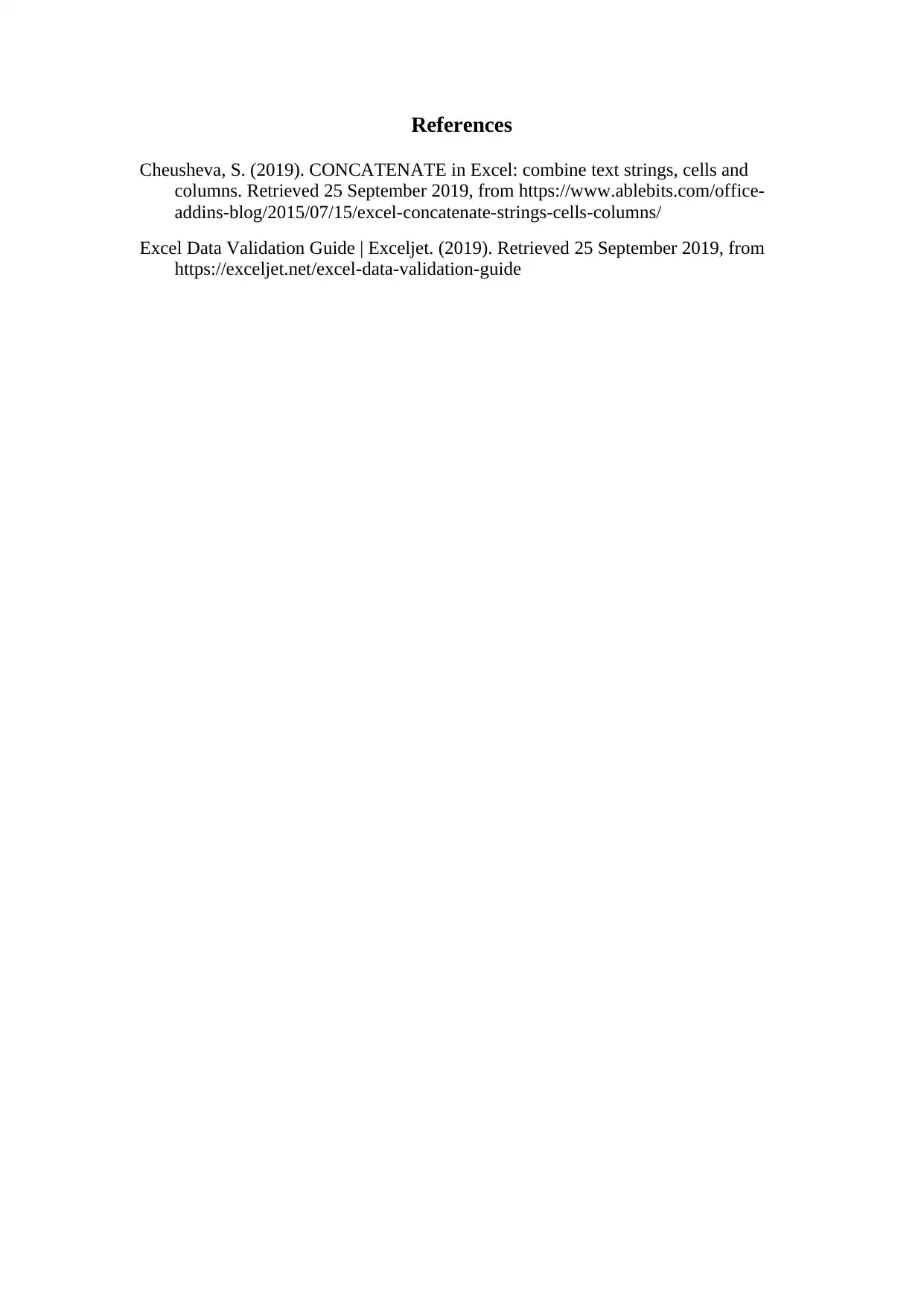ITECH1100 Understanding the Digital Revolution: Sock Limited Analysis
VerifiedAdded on 2022/10/14
|3
|761
|372
Homework Assignment
AI Summary
This assignment analyzes the business operations of Sock Limited, a customized socks manufacturer, using Microsoft Excel to automate processes and visualize data. The solution encompasses several key tasks. Firstly, it calculates the company's total operating expenses, including employee compensation, replacement costs, and fixed expenses. Secondly, it examines the relationship between quote amounts and manufacturing costs by associating sales with manufacturing staff (Angela or Bhavesh) based on their workdays and using Excel's IF function and chart functionalities. The analysis includes pivot tables to compare quote amounts by staff and a pie chart for visualization. Thirdly, the assignment focuses on estimating quote prices based on material type and size, employing pivot tables, the CONCATENATE function, and VLOOKUP to determine minimum average prices. Finally, it identifies popular sock categories based on the number of quotes, using the COUNTIF function to categorize products and recommend immediate manufacturing for popular items, while advising to wait for unpopular items. The solution demonstrates practical application of Excel functions for business analysis and automation, aligning with the learning outcomes of ITECH1100.
1 out of 3










![[object Object]](/_next/static/media/star-bottom.7253800d.svg)